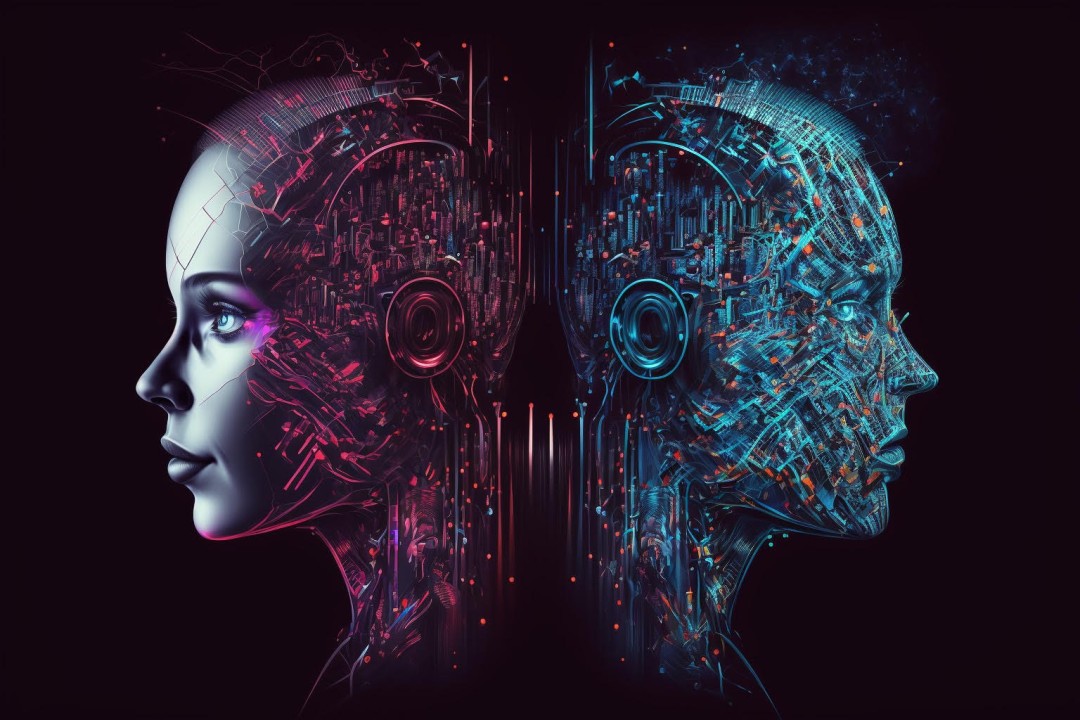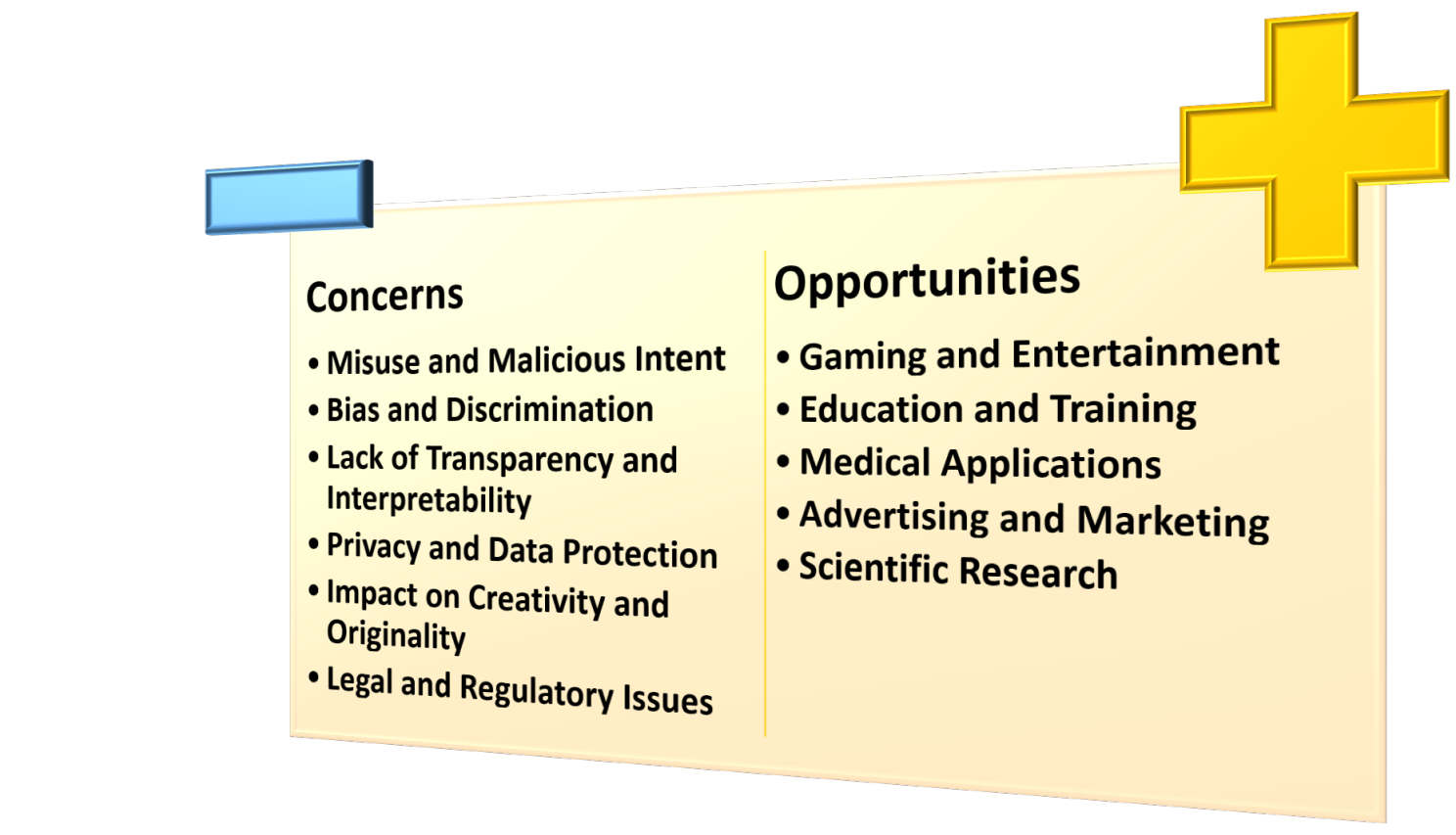Comments
- No comments found

The term "AI hallucination" in this context refers to the ability of AI models to generate content that is not based on any real-world data, but rather is a product of the model's own imagination.
There are concerns about the potential problems that AI hallucinations may pose, including ethical, social, and practical issues.
One of the main ethical concerns surrounding AI hallucinations is their potential misuse. For example, AI-generated images and videos could be used to spread false information, manipulate public opinion, or even perpetuate harmful stereotypes. This is particularly concerning given the ease with which such content can be disseminated through social media and other online platforms.
Another issue is the lack of transparency and interpretability of AI algorithms used to generate these hallucinations. While AI-generated content may appear convincing, it can be difficult to understand how the algorithm arrived at the specific output. This can lead to a lack of accountability and potential bias in the content produced, as well as difficulty in detecting any harmful content generated by the AI.Moreover, the reliance on large datasets to train AI algorithms can lead to further concerns regarding privacy and data protection. For example, sensitive or personal data may be used without consent or used to create inappropriate or biased content. There is also the potential for the misuse of AI-generated content in malicious attacks, such as deepfakes, which are videos or images that are manipulated to show someone saying or doing something they did not actually do.
From a social perspective, there is a concern that AI hallucinations may lead to a loss of creativity and originality in art and other forms of media. The use of AI algorithms to generate content raises questions about the role of human creativity and the value of originality in the creative process.There are also practical concerns around the performance of AI algorithms in generating hallucinations. For example, the quality of the generated content may be limited by the amount and quality of the data used to train the algorithm. In addition, there may be limitations in the types of sensory experiences that AI algorithms can generate, such as the inability to replicate the subtleties of human emotional expression.
While AI hallucinations offer many exciting possibilities, there are also concerns around their potential misuse, lack of transparency, and potential impact on creativity and originality. Addressing these issues will require responsible development and implementation of AI algorithms, as well as ongoing evaluation and monitoring of their use. By doing so, we can ensure that AI hallucinations are used in a way that benefits society while avoiding potential negative consequences.

Medical Applications: AI hallucinations can be used to simulate medical procedures, allowing doctors and surgeons to practice and refine their skills without putting patients at risk.
Education and Training: AI-generated content can be used to create more engaging and interactive learning experiences for students. This can include simulations, visualizations, and other forms of multimedia content.
Gaming and Entertainment: AI-generated content can be used to create more immersive gaming experiences, as well as to generate new forms of interactive art and music.
Advertising and Marketing: AI-generated content can be used to create personalized ads and marketing campaigns that are tailored to individual preferences and interests.
Scientific Research: AI hallucinations can be used to create simulations of complex systems and phenomena, helping researchers to better understand the world around us.
Misuse and Malicious Intent: AI-generated content can be used for malicious purposes, such as creating deepfakes, spreading false information, or inciting violence.
Bias and Discrimination: AI algorithms can perpetuate bias and discrimination if they are trained on biased or discriminatory data.
Lack of Transparency and Interpretability: The lack of transparency and interpretability in AI algorithms can make it difficult to understand how they arrive at specific outputs, leading to potential biases and other ethical concerns.
Privacy and Data Protection: The use of large datasets to train AI algorithms raises concerns around data protection and privacy.
Impact on Creativity and Originality: The use of AI algorithms to generate content raises questions about the role of human creativity and the value of originality in the creative process.
Legal and Regulatory Issues: There are legal and regulatory issues around the use of AI-generated content, including issues around copyright, ownership, and liability.
As an AI language model, ChatGPT does not experience AI hallucinations in the traditional sense. Instead, it is designed to generate responses based on patterns it has learned from analyzing large amounts of text data.
When a user inputs a prompt or question, ChatGPT uses its language processing algorithms to generate a response that is relevant and coherent based on its understanding of the input. This is achieved through a process called "natural language processing," which involves breaking down the input into its constituent parts (such as words and phrases), analyzing the relationships between those parts, and using that analysis to generate a response that makes sense.
While ChatGPT does not experience hallucinations in the same way that humans do, it is possible for it to generate responses that are unexpected or unpredictable. This is because the language patterns that it has learned are based on the data it has been trained on, which can sometimes include biased or incomplete information. As a result, there is always the potential for AI-generated responses to contain biases, inaccuracies, or other errors, especially if the data that the model has been trained on is flawed in some way.
Developers are continually working to improve the accuracy and reliability of AI language models like ChatGPT, through techniques such as improving the quality of training data, implementing better quality control measures, and developing more sophisticated algorithms for analyzing and interpreting text data. Ultimately, the goal is to create AI language models that are capable of generating responses that are as accurate, reliable, and coherent as possible, while minimizing the potential for biases and other errors.
AI hallucinations have a significant impact on generative AI, which is a field of AI focused on creating algorithms and models that can generate new and original content. One of the primary impacts of AI hallucinations on generative AI is the potential for increased creativity and originality in AI-generated content. By allowing AI models to generate content that is not based on existing data, hallucinations can result in the creation of novel and unexpected outputs. This can be especially useful in fields such as art, music, and literature, where originality and creativity are highly valued.
There are also concerns around the impact of AI hallucinations on the accuracy and reliability of generative AI models. Since hallucinations are based purely on the model's own imagination, they may not be grounded in real-world data or reflect accurate representations of reality. This can lead to the generation of inaccurate or misleading outputs, which could have negative implications in fields such as journalism or scientific research.
Additionally, there are concerns around the potential for AI-generated hallucinations to perpetuate biases or other ethical concerns. If AI models are trained on biased or incomplete data, they may generate hallucinations that reflect those biases or inaccuracies, leading to potential ethical concerns around issues such as discrimination or misinformation.
The impact of AI hallucinations on generative AI is complex and multifaceted, with both opportunities and challenges associated with this emerging technology. As research in this field continues to evolve, it will be important to carefully consider the potential implications of AI hallucinations on the accuracy, reliability, and ethical considerations of generative AI models.
Ahmed Banafa is an expert in new tech with appearances on ABC, NBC , CBS, FOX TV and radio stations. He served as a professor, academic advisor and coordinator at well-known American universities and colleges. His researches are featured on Forbes, MIT Technology Review, ComputerWorld and Techonomy. He published over 100 articles about the internet of things, blockchain, artificial intelligence, cloud computing and big data. His research papers are used in many patents, numerous thesis and conferences. He is also a guest speaker at international technology conferences. He is the recipient of several awards, including Distinguished Tenured Staff Award, Instructor of the year and Certificate of Honor from the City and County of San Francisco. Ahmed studied cyber security at Harvard University. He is the author of the book: Secure and Smart Internet of Things Using Blockchain and AI.
Leave your comments
Post comment as a guest